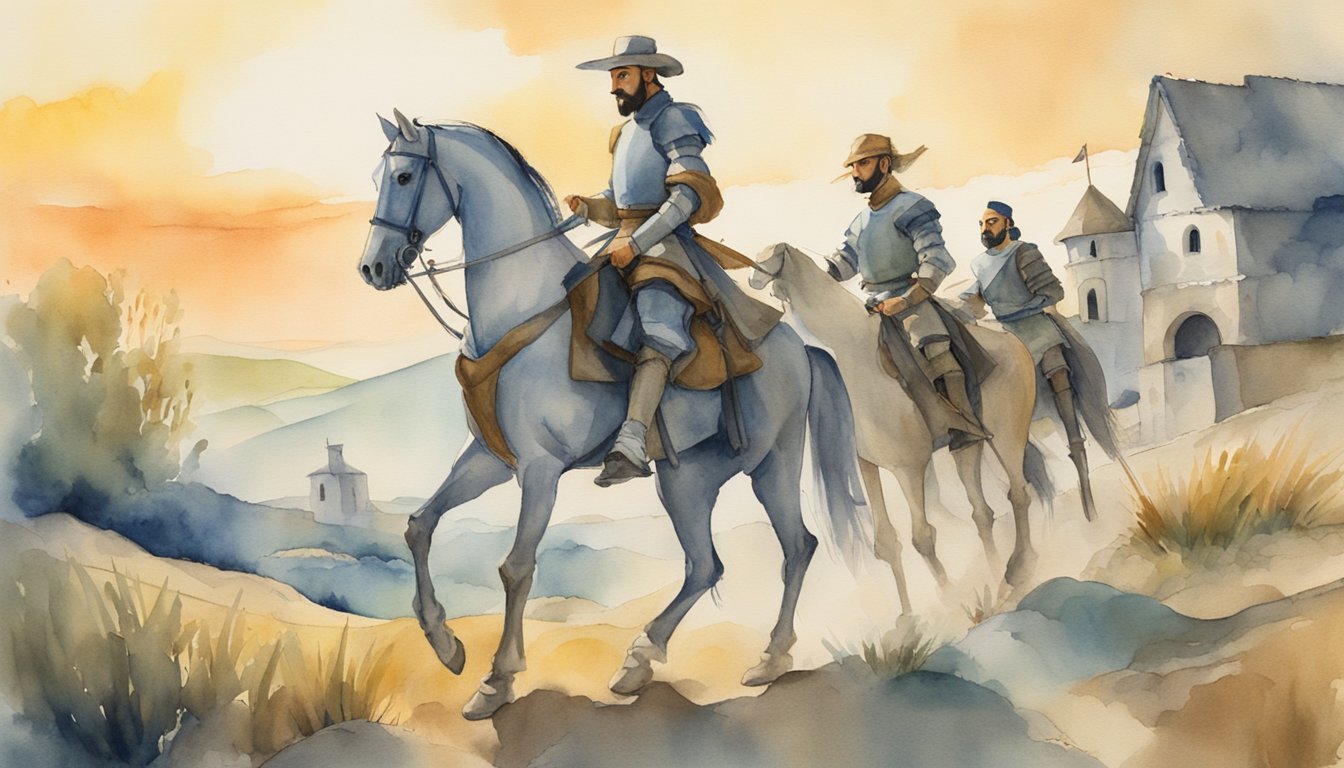The Cultural Significance of Don Quixote
As a seminal work that stands at the threshold of the modern literary tradition, “Don Quixote” has left an indelible mark on cultural consciousness and literary innovation.
Impact on Literature and the Birth of the Modern Novel
“Don Quixote” is not just a historical piece; it is recognized as the first modern novel. Published in two parts, in 1605 and 1615 by Miguel de Cervantes, this work introduced a new form of storytelling that broke away from the linear, idealized tales of chivalry. The character development, interplay of reality and illusion, and use of metafiction in “Don Quixote” are significant traits that have influenced the structure and style of the novel format as a versatile medium for exploring complex themes.
Don Quixote’s Influence on World Literature and Adaptations
Miguel de Cervantes’ creation has transcended linguistic borders, with “Don Quixote” being translated into multiple languages. Its narrative has been admired and dissected for centuries, leading to an array of interpretations across world literature. “Don Quixote” has also inspired countless adaptations across various forms of media, from Tobias Smollett’s English translation to Broadway productions, highlighting its universal appeal and timeless entertainment value. The absurd and poignant misadventures of the Knight of La Mancha reflect the social and personal quests for idealism and reality, making “Don Quixote” a masterpiece that continues to resonate with audiences today.
The Story and Characters of Don Quixote

In “Don Quixote,” readers explore the chivalric adventures of a man entangled between reality and the ideals of the romances he cherishes. Miguel de Cervantes’ work, first published in two parts in 1605 and 1615, remains a foundational piece in Western literature, depicting the titular character’s determination in the face of a rapidly changing world.
The Adventures and Ideals of Don Quixote and Sancho Panza
Don Quixote de la Mancha is an aging gentleman who has become obsessed with the chivalric romances of old. After reading these texts, he decides to become a knight-errant and revives chivalry by embarking on a series of quests. His loyal squire, Sancho Panza, a peasant man, accompanies him, bringing a down-to-earth perspective to counterbalance Don Quixote’s grandiose illusions of grandeur. Their dynamic becomes the heart of many misadventures, including the famous episode where Don Quixote, mistaking windmills for giants, charges at them, a scene that epitomizes his idealistic but misguided valor.
Symbolism and Major Themes in the Novel
The windmills are just one layer of rich symbolism encountered in “Don Quixote.” They, along with the various characters they meet—like the Knight of the White Moon and Dulcinea del Toboso—embody the themes of idealism versus reality and illusion versus sanity. The novel presents a poignant exploration of these themes, highlighted by the misguided protagonist’s steadfast commitment to chivalry juxtaposed against Spain‘s changing social and literary landscapes. It is through these layered symbols that “Don Quixote” maintains its relevancy, examining the human condition and the pursuit of ideals in a world bound by pragmatic concerns. Cervantes further enriches the narrative by employing multiple layers of storytelling, not least through Cide Hamete Benengeli, the fictional Moorish author whose manuscript the narrator claims to be translating.

